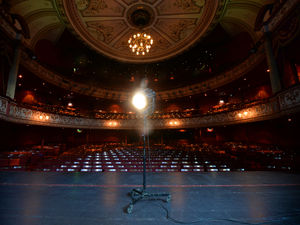Officially at risk: More of Shropshire's historic buildings added to register
Our region is home to more than its fair share of historic and fine buildings, but many are considered ‘at risk’. Thom Kennedy reports.
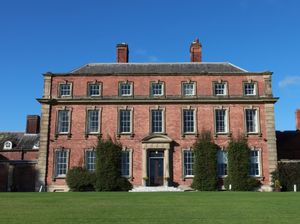
Kinlet Hall gazes wistfully across the rolling fields of south Shropshire, its elevated position raising it above the low morning mist.
Built in 1729, it is now used as a wedding venue, and is a memorable and imposing place to get hitched, with its glowing red brick facade and towering chimneys.
But it is now officially considered to be a building that is under threat. The hall is one of 10 Shropshire buildings which have been added to Historic England's At Risk Register this year.
And while it is the only grade I listed building to have been flagged up by the government's heritage agency, it is nonetheless in good company.
Six more grade II or II* listed buildings and three scheduled monuments have also been highlighted as being under threat from the advancing years.
The buildings added to the At Risk Register this year:
Church of St Michael, Alberbury
Church of St John, Newcastle on Clun
Church of St Chad, Stockton
Bowl Barrow, All Stretton
Roman bridge abutment, Acton Burnell
Kinlet Hall, Kinlet
Church of All Saints, Worthen
Church of St Edward, Condover
St Julian's Well, Ludlow
Range at Castle Farmhouse, Wistanstow
"Over the past 20 years we have used the Heritage at Risk Register to highlight places in need of care and attention," said Duncan Wilson, chief executive of Historic England.
"We have dedicated time, expertise and money to bring these special but threatened places back into use, and we are proud to have played our part in saving them from neglect."
At Kinlet, that means repairs to masonry and roof coverings. It may not sound like the biggest job in the world, but with thousands of buildings around the country requiring a bit of TLC, it's part of a larger job of patching up Britain's buildings.
Of the other buildings in Shropshire that are under threat, most are churches. The Church of St Michael in Alderbury, a 12th century building which was updated in the 1749 needs its weathervane overhauling and access to the tower parapet needs to be transformed.
Others in Newcastle-upon-Clun, Stockton, Worthen and Condover are experiencing similar problems.
A more obscure but no less important entry can be found in a field near Acton Burnell. On a bend in a stream just outside the village is an old Roman abutment – essentially a bridge support – which formed part of the road linking Wroxeter and Leintwardine.
It is one of only 10 that remain, but it too has been allocated a place on the list of buildings under threat.
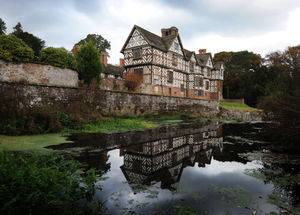
Similarly, a bowl barrow – a late Bronze Age funeral monument – at All Stretton may not look like much to the casual bystander, but is important enough to help understand the settlement of people on the Long Mynd.
Nationally, 242 sites have been added to the register and 318 removed, and the good news in Shropshire is that six listed buildings or scheduled monuments have been removed from the register.
The standing cross in the churchyard at Michael and All Angels' Church in Alberbury is no longer considered to be at risk, as has a 17th century complex at Pentre Isaf near Oswestry, where "good progress" is being made on repairs.
The 17th century fortified manor house complex at Cheney Longville is also on the road to recovery, ahead of its planned transformation into holiday accommodation, as is the Collegiate Church of St Mary Magdalene in Bridgnorth.
"Despite the successes, other places continue to fall into disrepair," Mr Wilson added.
"They have been added to this year's register and we will focus our attention on them in the years ahead."
On the national landscape, churches where leading suffragette Emmeline Pankhurst married and author George Eliot worshipped are among the latest national heritage assets to have been deemed to be at risk.
One of the oldest purpose-built museums in England, an Elizabethan bridge which collapsed following heavy rain and a purpose-built cutlery works have also been added to the heritage at risk register.
Some 1,489 historic buildings and scheduled monuments, 911 places of worship, 2,151 archaeological sites, 99 parks and gardens, four battlefields and four protected wreck sites and 502 conservation areas are listed as at risk of neglect, decay or inappropriate change.
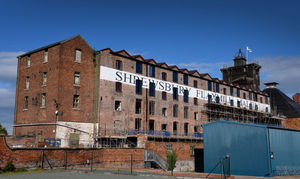
And including the latest additions, there are now 94 buildings in Shropshire which are considered to be under threat.
Among them the historically vital Flaxmill at Ditherington in Shrewsbury, which is still on the list inspite of extensive, multi-million pound works which have finally allowed the removal of scaffolding from around the world's first iron-framed building.
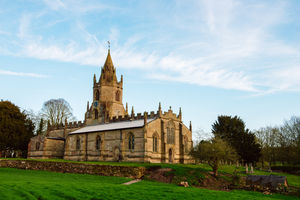
The Church of St Bartholomew at Tong, a familiar sight for anybody travelling along the A41 in that part of the county, the 16th century Pitchford Hall south of Shrewsbury, widely considered to be one of the most beautiful historic houses in the country, and Ludlow's town walls – part of which collapsed in 2013 – remain on the register.
It all suggests that the fight for our county's heritage continues.

